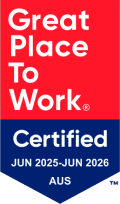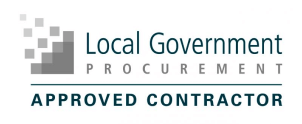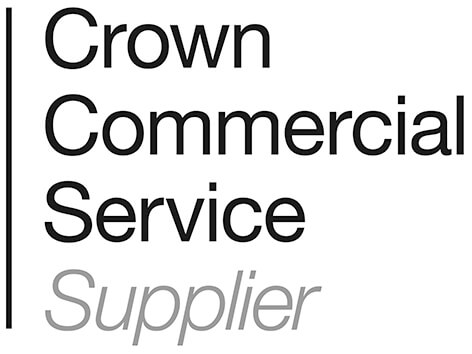Article
25 July 2025
Why BAU TechnologyOne Support Needs a Better Model
In today’s enterprise IT environment, business-as-usual (BAU) support isn’t what it used to be. Teams must balance managing daily issues with delivering long-term system improvements. The tension is particularly acute for organisations operating sophisticated enterprise systems like TechnologyOne, as the platform now touches almost every business unit.
From finance, asset management, HR and payroll, content management, property and rating, supply chain, and corporate performance, TechnologyOne users span entire organisations. And yet, support models haven’t kept pace. This article explores the growing challenges of BAU application support for TechnologyOne users, the limitations of traditional approaches, and the support models that are helping IT leaders and applications and systems managers regain control.
The Growing Pressure on Internal Teams
Historically, TechnologyOne was implemented on-premise and installed on desktops, so by default, the IT team became responsible for supporting the applications, as well as maintaining the hardware and software. The system’s footprint grew as departments asked for more from their ERP systems and modernised their digital capabilities and processes, but internal support structures failed to keep up.
Richard McManus, CEO of Lánluas, explained the typical scenario during an industry-first webinar on Lánluas Supported Application Service (SAS):
“Support often falls on the IT department because that’s where TechnologyOne was originally installed on desktops and managed like infrastructure. But today, the platform is cloud-based, business-led, and deeply embedded in every function.”
With hundreds or thousands of TechnologyOne end-users in any given organisation, support volumes have ballooned. Internal teams now require a different skill set; rather than having hardware and IT teams running core business operations, teams need more of the business skills that are needed to run an ERP and future-orient the organisation for internal and external stakeholders.
This situation can be untenable and often results in:
- Slow Response Times: Waiting for resolutions to issues can lead to downtime and hamper productivity, negatively impacting business operations and customer satisfaction.
- Unresolved Tickets: Persistent issues left unresolved can snowball into larger problems, disrupting day-to-day activities and potentially impacting the bottom line.
- Lack of Support Continuity and Interrupted Service: Dealing with different people each time a support ticket is raised can result in inconsistent problem-solving approaches, leading to inefficiencies and frustration among support staff.
TechnologyOne Resourcing: The Never-ending Struggle
Compounding these challenges is the limited availability of skilled TechnologyOne subject matter experts (SMEs) in the market. Businesses often struggle to find and retain the expertise needed to effectively manage their TechnologyOne enterprise applications in-house, as those roles are in high demand.
In addition, we often find organisations can’t (or won’t) hire full-time enterprise systems administrators due to resource and budget challenges. Instead, they rely on:
- Key-person expertise (which creates dependency risks)
- Informal support from business units (which is inconsistent)
- Reactive use of consulting partners (which is costly)
- Vendor support (which is helpful but dependent on availability and removes autonomy).
Vendor Support Has Limitations
Many organisations assume that vendor support will bridge the gap. But as the webinar highlighted, that’s not always the case.
“The vendor support focuses on software defects. If the problem is a configuration issue, a user error, or a process design gap, clients are often referred elsewhere,” said Richard.
Trying to blend Application Managed Services (AMS) into BAU support quickly erodes user trust. Users are not prepared to wait for answers when they transition from project delivery to BAU.
More broadly, many ERP customers report that, even with vendor support models, the same issues of slow response times, unresolved tickets, interrupted service, and a lack of support continuity persist due to a range of circumstances, including budget, vendor availability, and contracted scope of work.
A Broader Look at Supporting the TechnologyOne Platform
What’s really needed is a fit-for-purpose TechnologyOne BAU support model that recognises four truths:
- Most internal teams are under-resourced. They lack the headcount and depth to cover ongoing application configuration support and user enablement.
- Vendor services are project-based, not embedded. There’s no ‘always-on’ support unless you build it yourself.
- User expectations are higher than ever. When the system doesn’t work as expected, frontline staff lose productivity, and frustration mounts with internal and external stakeholders.
- Users won’t spend time completing vendor online courses to solve a BAU issue.
This phenomenon leads to a support paradox: the more valuable the platform becomes, the more strained the support model becomes.
What a Modern TechnologyOne Support Model Looks Like
Enter a model that blends internal ownership with external expertise. This model:
- Uses subscription-based access to experienced TechnologyOne consultants
- Integrates easily with internal ticketing systems
- Provides resource continuity (same person, week to week)
- Focuses specifically on application configuration and user support, not projects.
Lánluas Supported Application Services (SAS) is a proven example of this.
A modern TechnologyOne BAU application support framework must include:
BAU triage and configuration help
Internal teams require prompt access to expertise to address urgent issues such as broken reports, incorrect permissions, and failed batch jobs. This requires a TechnologyOne SME who is familiar with the local system and organisational context, as well as its intricacies.
System monitoring and admin tasks
People often leave essential functions, such as DSP servers, scheduled jobs, and security roles, to chance. Having them proactively managed reduces staff downtime and avoids last-minute scrambles.
Structured service reporting
Without reporting, support becomes invisible. Modern support models use structured logs, time tracking, and usage reports to make support accountable.
Flexible commitment
Support shouldn’t lock you in for years and years of support that you may or may not use. A client-centric support model offers cancel-anytime options and flexible hours that scale up or down based on need and changes to internal resourcing.
TechnologyOne Customers Are Doing Things Differently
Sydney Catholic Schools and the New Plymouth District Council are two organisations that use Lánluas SAS to balance their BAU application support demands and strategic priorities.
Sydney Catholic Schools supports more than 12,000 employees and over 1,000 TechnologyOne users with only three dedicated internal staff members. They use Lánluas SAS to triage tickets, maintain continuity, and enable strategic improvements.
“There are so many big strategic initiatives and so many system improvements that we still haven’t tapped into yet,” added Hayley Wilding, CFO at Sydney Catholic Schools.
“So, for us, it’s being able to have that BAU supported while being able to focus on all those other initiatives at the same time. If we didn’t have that, then we would definitely struggle to service the whole organisation. It makes a big difference for us to be able to have that dedicated person who knows our system.”
When New Plymouth District Council lost all its experienced internal systems staff at the same time, Lánluas SAS provided an immediate safety net of TechnologyOne expertise and experience while the Council was preparing to migrate to the TechnologyOne Cloud.
“We were in a real world of hurt,” said Alistair Gunn, former IT Team Lead, New Plymouth District Council.
“When the staff left my team, I had no staff who knew TechnologyOne. It was quite a serious situation we were in, as we have approximately 450 users, and importantly, as a council, much of our system is driven by legislative requirements and timeframes. The use of Lánluas, a company with extensive local government experience, allowed them to quickly initiate the job. It’s not unfair, or an exaggeration, to say that Lánluas came to our rescue, but it’s the truth of it.”
Final Thoughts: What to Ask Yourself
If you’re responsible for TechnologyOne BAU application support, ask:
- Are our internal resources enough to meet demand?
- Is support spread too thinly between IT and the business?
- Are we overly reliant on one or two key people?
- Do we have the right expertise in the team to deliver BAU application support effectively?
- Do we have clear reporting for BAU application support?
- Are we getting what we need from vendor support?
If the answer to any of these is unclear, it may be time to rethink how your TechnologyOne application support is structured.
TechnologyOne BAU application support shouldn’t be an afterthought. It’s the backbone of your enterprise environment. Getting it right is essential for transformation, user adoption, compliance, and a positive staff experience.
Sign up to our newsletter for the latest news and insights.
Plus, get exclusive access to our VIP content.


